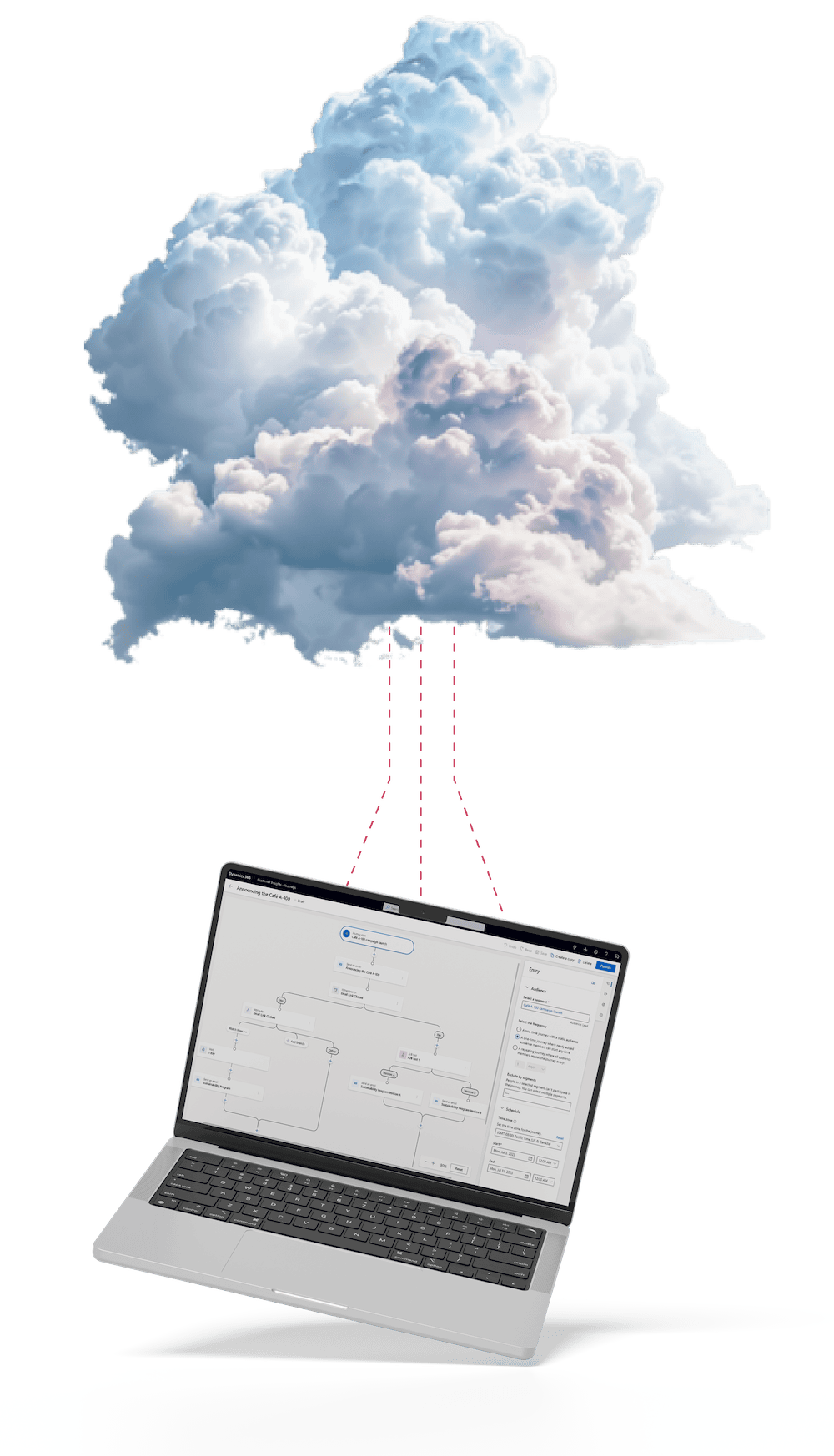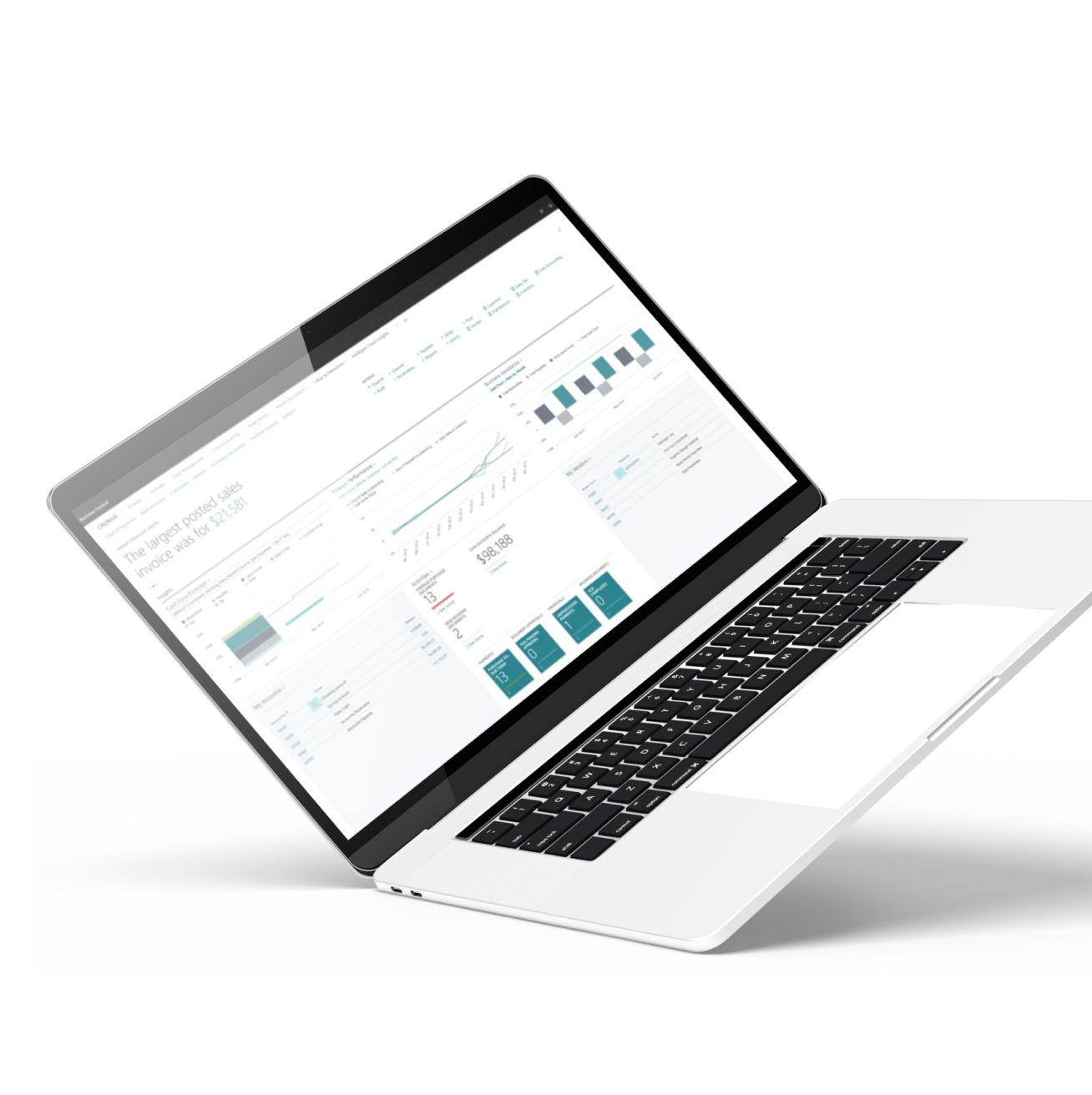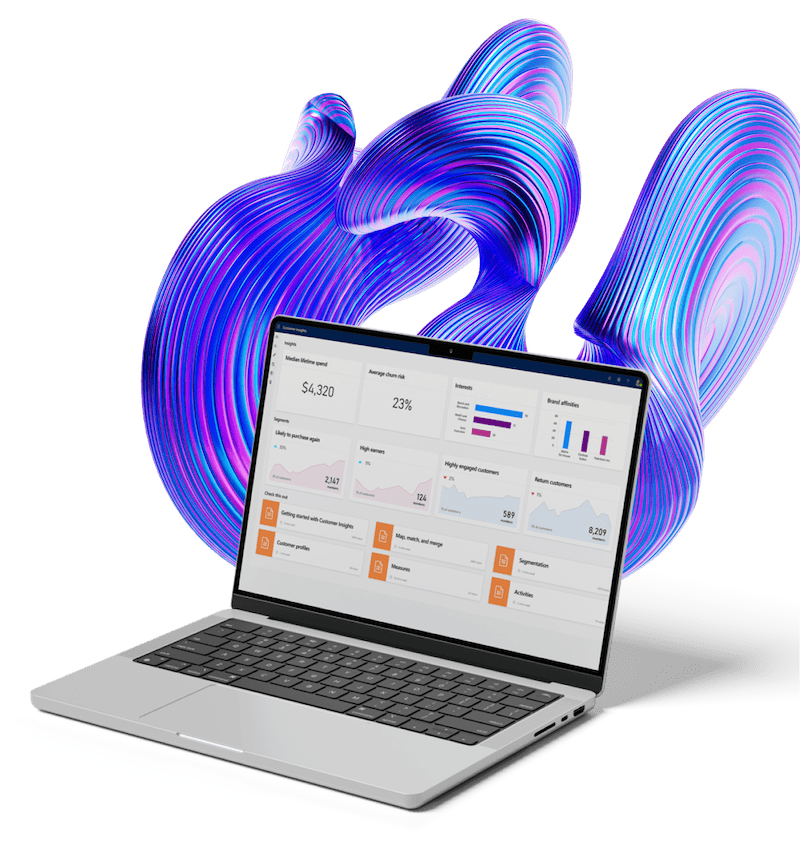Choosing the right fit:
Cloud vs. on-premises vs. hybrid
As more international organizations turn to online platforms for managing their business operations, the choice of ERP deployment—cloud, on-premises, or hybrid—remains critical. For users of Microsoft Dynamics 365, each deployment option offers unique advantages - and challenges, making the decision highly dependent on specific business needs.

Cloud, on-premises or hybrid ERP solutions
At its core, the main difference between cloud-based and on-premises ERP systems is in the deployment model.
On-premises ERP requires organizations to host the software on their servers, which can mean higher infrastructure and maintenance costs.
In contrast, cloud-based ERP is hosted on external servers managed by a vendor and accessed via the internet, usually through a subscription-based SaaS model.
Hybrid solutions offer a combination of both approaches describe above, allowing businesses flexibility in how they manage their data and infrastructure.
Cost efficiency
Cloud ERP systems reduce the need for costly hardware and infrastructure, as organizations no longer need to invest in or maintain servers.
- This shift eliminates the costs associated with server management, dedicated IT staff, and energy consumption.
- Subscription-based pricing further simplifies budgeting, offering predictable expenses and a lower total cost of ownership (TCO).
For example, a global retail chain with multiple locations might benefit from the cost savings and scalability of a cloud-based ERP, allowing them to efficiently manage inventory, financials, and operations without having to invest in on-site infrastructure for each region.
Automatic updates and innovation
- Cloud-based ERP solutions are automatically updated, ensuring that companies always have access to the latest features and security enhancements. Microsoft Dynamics 365, for instance, delivers biannual updates, keeping the system at the cutting edge without requiring downtime for upgrades.
Scalability and flexibility
International organizations frequently experience fluctuating demands, whether through seasonal sales or global expansion.
- Cloud ERP systems are scalable and flexible, making it easy to add users, applications, or performance capacity when needed.
- Cloud platforms allow for expansion into new markets or adjusting to business growth without the need for physical infrastructure changes.
For example, a multinational manufacturing company could leverage the cloud’s scalability during peak production periods, adding more users and processing power, and then scaling back during slower times to optimize costs.
Global accessibility
One of the most significant advantages of cloud ERP is its global accessibility.
- Employees across multiple regions can access the system securely via the web on various devices, enabling seamless collaboration and remote work. This is especially valuable for international teams that rely on real-time data for decision-making.
A global logistics company, for instance, could empower employees to manage shipments, track orders, and coordinate operations from anywhere, ensuring continuity across time zones and regions.
Security and data compliance
Microsoft Dynamics 365 offers robust cloud security features, ensuring that data is protected in compliance with international regulations.
- Although the cloud ERP vendor is responsible for managing and securing the infrastructure, organizations must still enforce internal access controls, giving employees access to only the data relevant to their roles.
Potential challenges of cloud ERP
While the benefits of cloud ERP are clear, there are a few considerations to keep in mind:
- Organizations operating in regions with unreliable internet access may experience downtime if connections fail.
- Although the vendor handles security, organizations must still manage data governance and compliance, especially in industries with strict regulatory requirements.

Complete control of your data and infrastructure
Complete data control and security
Full control over sensitive data, ensuring it resides within your infrastructure, is essential for handling confidential or regulated data.
Customization and flexibility
Deeply customizable to align with unique business processes, with full access to the underlying code for tailored solutions.
Integration with legacy systems
Easier integration with existing on-premises infrastructure and legacy applications without requiring cloud-specific tools.
Performance and reliability
Faster data access and reduced latency, particularly in areas with limited internet connectivity or for high-demand workloads.
Compliance with regulations
Meet strict data residency, sovereignty, and regulatory requirements, making it suitable for industries with stringent compliance needs.
Potential challenges
Dynamics ERP on-premises requires significant upfront investment in hardware, licenses, and setup, making it costly for smaller organizations. Maintenance demands in-house IT expertise or contracted support for updates, patches, and troubleshooting, adding ongoing expenses. Scaling infrastructure is slower and costlier than the cloud, and updates must be manually implemented, risking downtime or outdated software. Over time, hardware may become obsolete, requiring upgrades, and disaster recovery depends on robust planning to prevent data loss or extended downtime. These challenges require careful consideration of resources and long-term goals.

The best of both worlds
Flexibility and scalability
Combine the scalability of the cloud with the control of on-premises, allowing businesses to adapt to changing needs.
Optimized data management
Sensitive data can stay on-premises for security and compliance, while the cloud efficiently handles less critical workloads.
Cost efficiency
Balances capital and operational expenses by leveraging on-premises for critical operations and the cloud for variable workloads.
Business continuity
Enables robust disaster recovery by using the cloud for backups and redundancy while maintaining local operations.
Seamless integration
Integrates smoothly with existing legacy systems and modern cloud services, offering a streamlined transition to hybrid environments.
Potential challenges
Hybrid solutions introduce complexity by requiring IT expertise to manage both on-premises and cloud environments while ensuring seamless integration and security. They can also increase operational costs due to dual infrastructure management and connectivity needs. Compliance across environments, particularly with data residency regulations, can be challenging. Additionally, reliance on stable internet connections for cloud components can affect performance if disrupted. Careful planning and management are essential to overcome these challenges and fully realize the benefits of hybrid deployments.

Choosing the right fit
When deciding between cloud, on-premises, or hybrid ERP solution for your international organization, it’s essential to consider factors such as cost, scalability, security, and data accessibility.
Cloud ERP systems like Microsoft Dynamics 365 are ideal for organizations seeking cost efficiency, innovation, and global accessibility.
Get in touch
Send us an email
Let us know what your challenges are all about. We are here to help.

